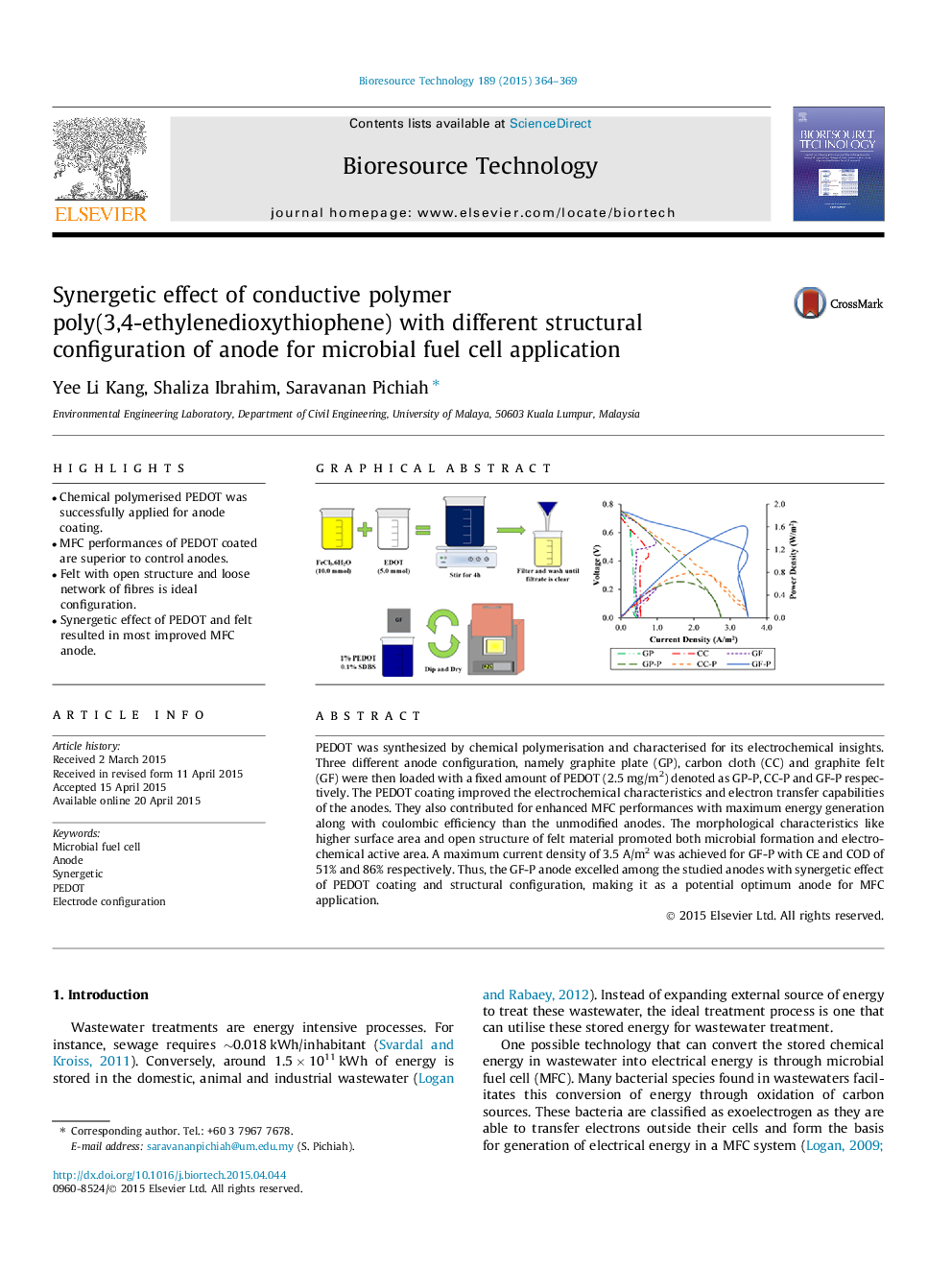| Article ID | Journal | Published Year | Pages | File Type |
|---|---|---|---|---|
| 679769 | Bioresource Technology | 2015 | 6 Pages |
•Chemical polymerised PEDOT was successfully applied for anode coating.•MFC performances of PEDOT coated are superior to control anodes.•Felt with open structure and loose network of fibres is ideal configuration.•Synergetic effect of PEDOT and felt resulted in most improved MFC anode.
PEDOT was synthesized by chemical polymerisation and characterised for its electrochemical insights. Three different anode configuration, namely graphite plate (GP), carbon cloth (CC) and graphite felt (GF) were then loaded with a fixed amount of PEDOT (2.5 mg/m2) denoted as GP-P, CC-P and GF-P respectively. The PEDOT coating improved the electrochemical characteristics and electron transfer capabilities of the anodes. They also contributed for enhanced MFC performances with maximum energy generation along with coulombic efficiency than the unmodified anodes. The morphological characteristics like higher surface area and open structure of felt material promoted both microbial formation and electrochemical active area. A maximum current density of 3.5 A/m2 was achieved for GF-P with CE and COD of 51% and 86% respectively. Thus, the GF-P anode excelled among the studied anodes with synergetic effect of PEDOT coating and structural configuration, making it as a potential optimum anode for MFC application.
Graphical abstractFigure optionsDownload full-size imageDownload as PowerPoint slide
